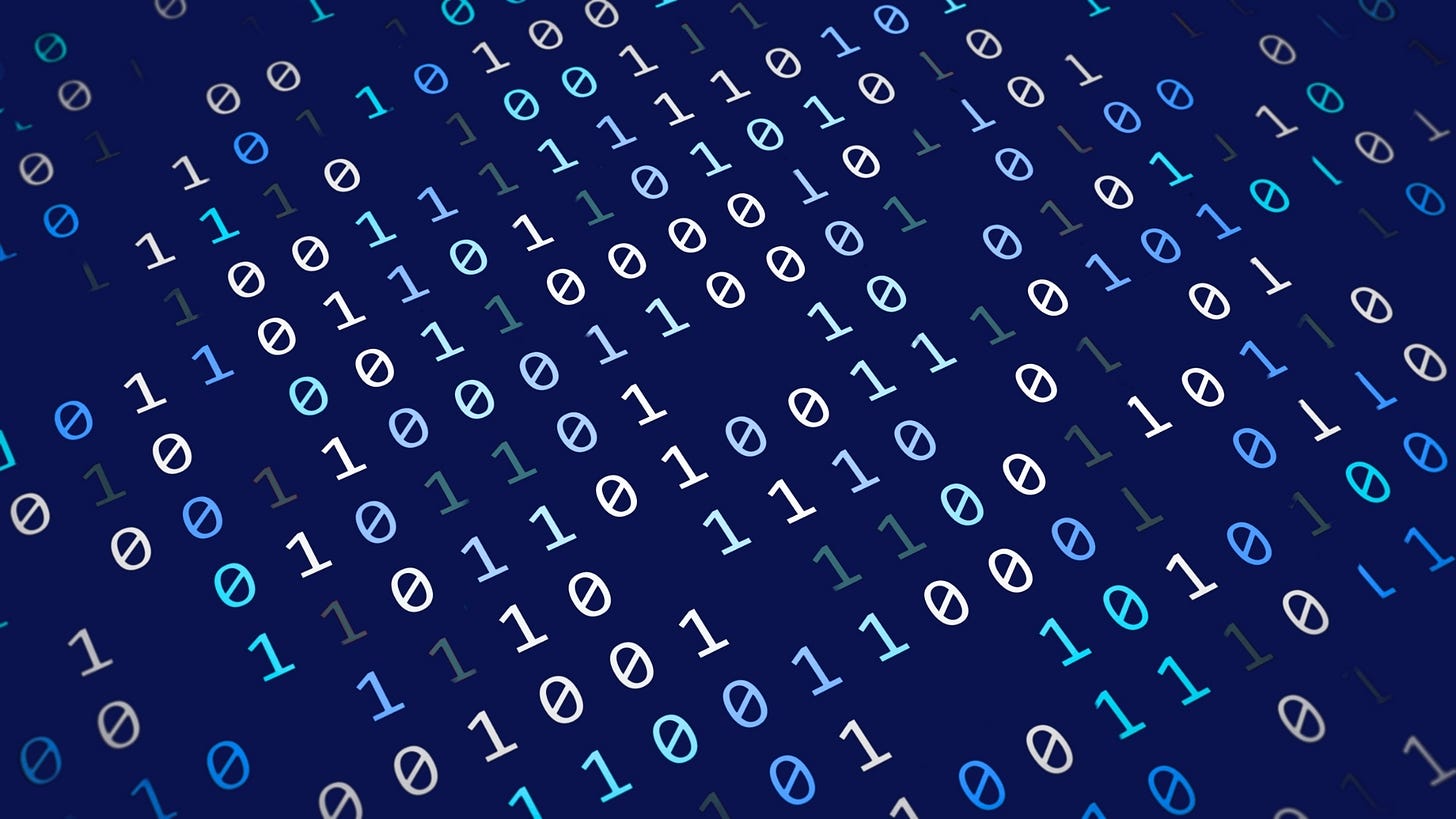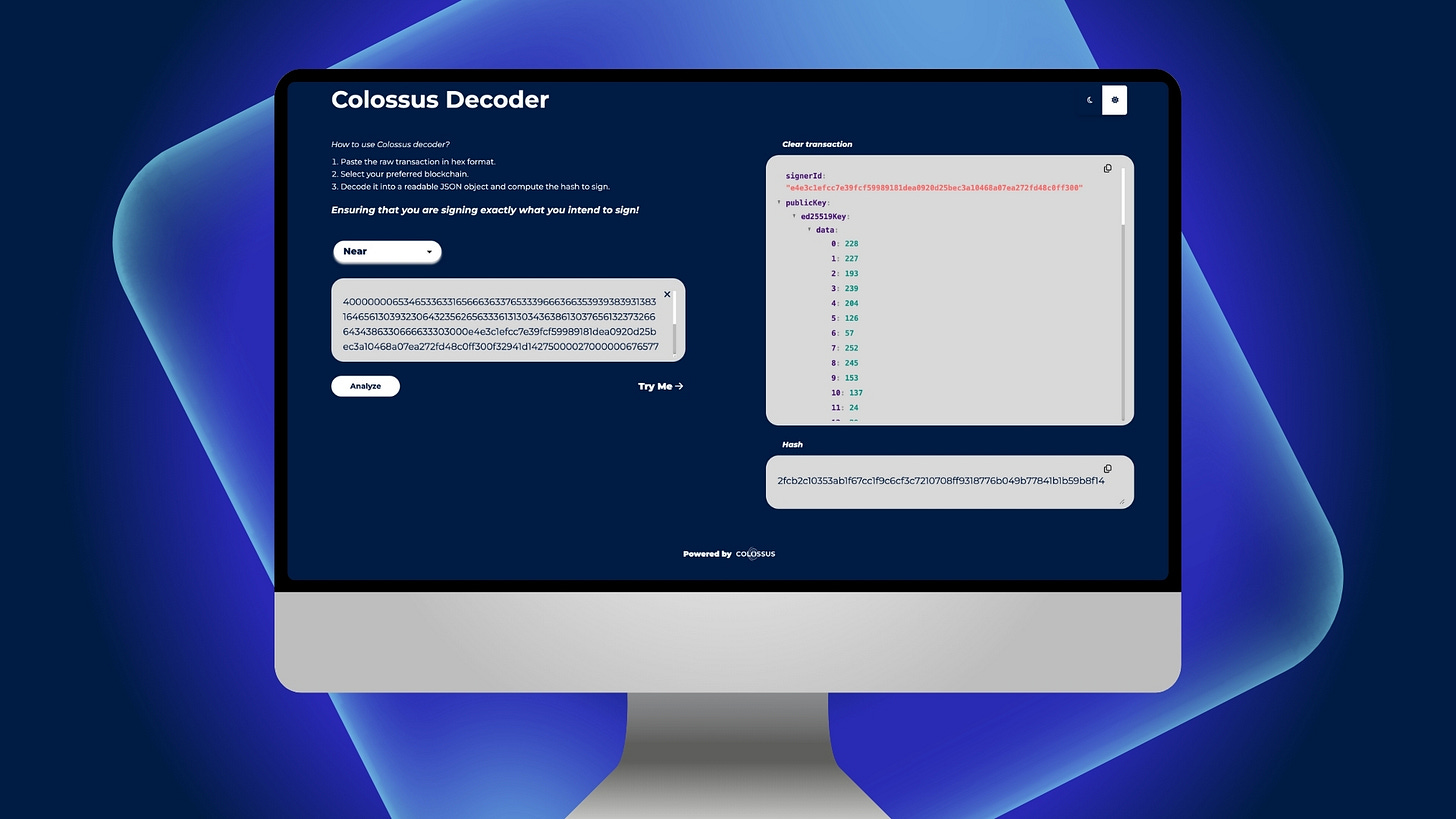Colossus Digital Decoder: One interface to decode them all
Why transaction decoding matters in crypto
In the fast-paced world of digital assets, transparency is critical—but understanding raw transaction data across multiple blockchains is anything but simple. For institutional players, developers, auditors, and advanced crypto users, being able to decode and interpret transaction payloads is essential for due diligence, debugging, compliance, and operational control.
Blockchain transactions are often encoded in low-level hexadecimal formats that obscure their meaning. Without tools to decode this data into readable instructions—such as function calls, smart contract interactions, and token transfers—monitoring blockchain activity becomes a significant challenge. That's where transaction decoders come in.
A brief look at the crypto decoder landscape
In recent years, as the adoption of blockchain technology has expanded, so has the need for transparency in how on-chain interactions are understood and verified. Transaction decoders are essential tools that allow users to interpret raw transaction payloads, which are often encoded in hexadecimal or Base64 formats, into human-readable instructions. These decoders support use cases ranging from smart contract auditing and development debugging to compliance reporting and forensic analysis.
Several popular decoding tools exist across various ecosystems:
Etherscan (Ethereum): The industry-standard block explorer for Ethereum, Etherscan includes a native transaction input decoder, but it only works for verified smart contracts. While it’s widely used, its decoding capability is limited to the Ethereum Virtual Machine (EVM) environment and does not provide insight into non-standard or obfuscated contracts.
SolanaFM & Solscan (Solana): These explorers have made strides in offering rich data analytics for Solana users. Their transaction decoders help visualize complex interactions across Solana’s CPI (Cross-Program Invocation) model. However, Solana’s unique architecture can still make decoding multi-step transactions a challenge.
TronScan (Tron): TronScan provides a basic view into transactions involving TRC-20 tokens or smart contract interactions. The decoder is functional but lacks deeper interpretability for advanced contract logic or multi-layered transaction flows.
Subscan (Polkadot/Kusama): Known for its support of Substrate-based chains, Subscan includes decoder tools that help users parse extrinsics and call data across parachains. This is critical for understanding governance actions, staking behaviors, and cross-chain messaging in the Polkadot ecosystem.
Mintel (https://minitel.wtf/): Minitel is a unique and experimental decoder platform designed to decode transaction payloads across multiple blockchain networks. It supports Solana, Ethereum, and NEAR, with a minimalist interface and real-time rendering of decoded data. Although still early in development, Minitel represents a creative community-driven approach to multichain decoding and experimentation.
Despite their utility, these tools are inherently chain-specific and often lack interoperability features. Most of them focus on user-facing applications rather than institutional-grade analysis, and none offer a unified, multi-chain interface where a single tool can decode across protocols with consistent user experience and output structure.
This fragmented landscape creates challenges for institutions operating in a multi-chain environment. From compliance monitoring to operational audits, institutions require tooling that supports standardized and scalable transaction decoding across ecosystems. This is the gap that Colossus Digital Decoder aims to fill.
Looking at NEAR protocol
NEAR Protocol has rapidly become one of the most forward-thinking blockchain ecosystems, known for its scalability, developer-friendly architecture, and innovative use of WebAssembly. As institutional interest in NEAR grows, so does the need for accessible, reliable transaction transparency tools that match the protocol’s technical sophistication.
While core tools like NEAR Explorer, Pagoda Console, and Nearblocks provide foundational visibility, there is a growing opportunity to expand how developers, institutions, and validators interact with on-chain data, especially when it comes to decoding complex transactions involving smart contracts, staking, and asynchronous execution flows.
At Colossus Digital, we see NEAR not as a gap, but as a high-potential ecosystem ready for infrastructure enhancement. The development of NEAR decoder on the Colossus Digital Decoder represents our commitment to supporting NEAR’s growth by offering a solution that empowers users to better understand, audit, and operationalize NEAR transactions in real time.
The Colossus Digital Decoder allows users to decrypt NEAR transaction content, including:
Method calls and contract functions
Token transfers and staking actions
Action sequences across receipts
Base64 decoding of payloads
This makes the decoder a valuable asset for validators, dApp developers, and institutions working within the NEAR ecosystem, providing a clearer window into the activity on one of the most technically advanced blockchains.
Colossus Digital Decoder: One Interface, multi-chain decoding
The Colossus Digital Decoder (https://decoder.colossus.life/) is a free, browser-based transaction decoder designed to simplify and democratize transaction transparency across blockchains. Developed by Colossus Digital, this tool supports an expanding range of networks and allows users to decode and inspect transaction payloads in a clean, human-readable format.
Key Features:
Multi-Chain Support: Currently includes support for Ethereum, Solana, Polkadot, Kusama, Near, and more, with continuous updates, now there are 19 tokens supported.
User-Friendly Interface: Paste in a transaction hash and get a full breakdown of its decoded contents, no technical expertise required.
Open and Free: No login required. The platform is fully public and designed for accessibility by anyone, from institutional analysts to blockchain researchers.
The Colossus Digital Decoder is part of our broader mission to provide infrastructure-level transparency and tooling for the institutional blockchain space, bridging the gap between usability and deep protocol-level analysis.
Conclusion...
As institutional participation in Web3 grows, the demand for tooling that provides clarity, transparency, and interpretability increases with it. The Colossus Digital Decoder addresses this gap with a multi-chain, user-friendly platform, a critical step forward for institutions operating in this ecosystem.






